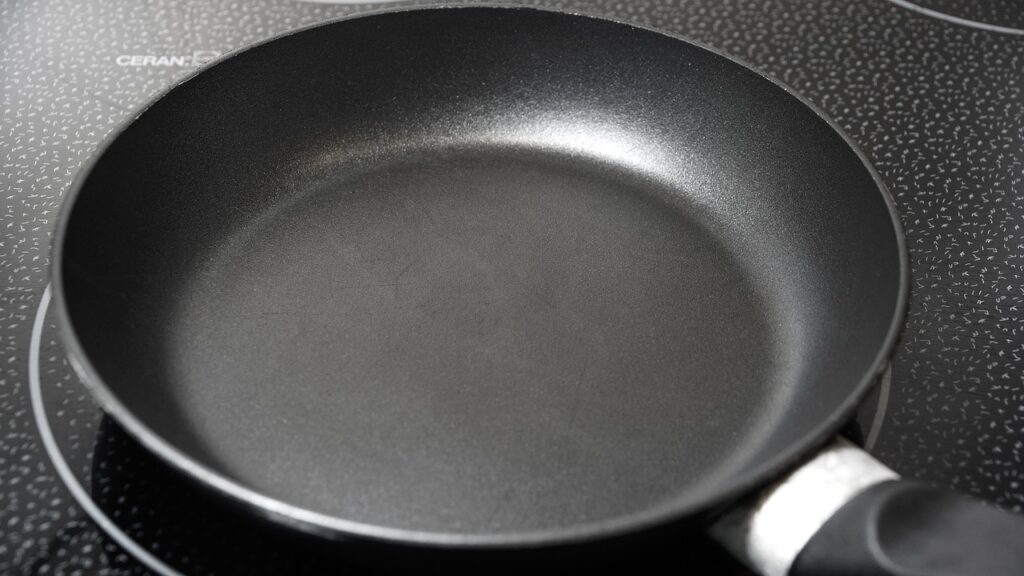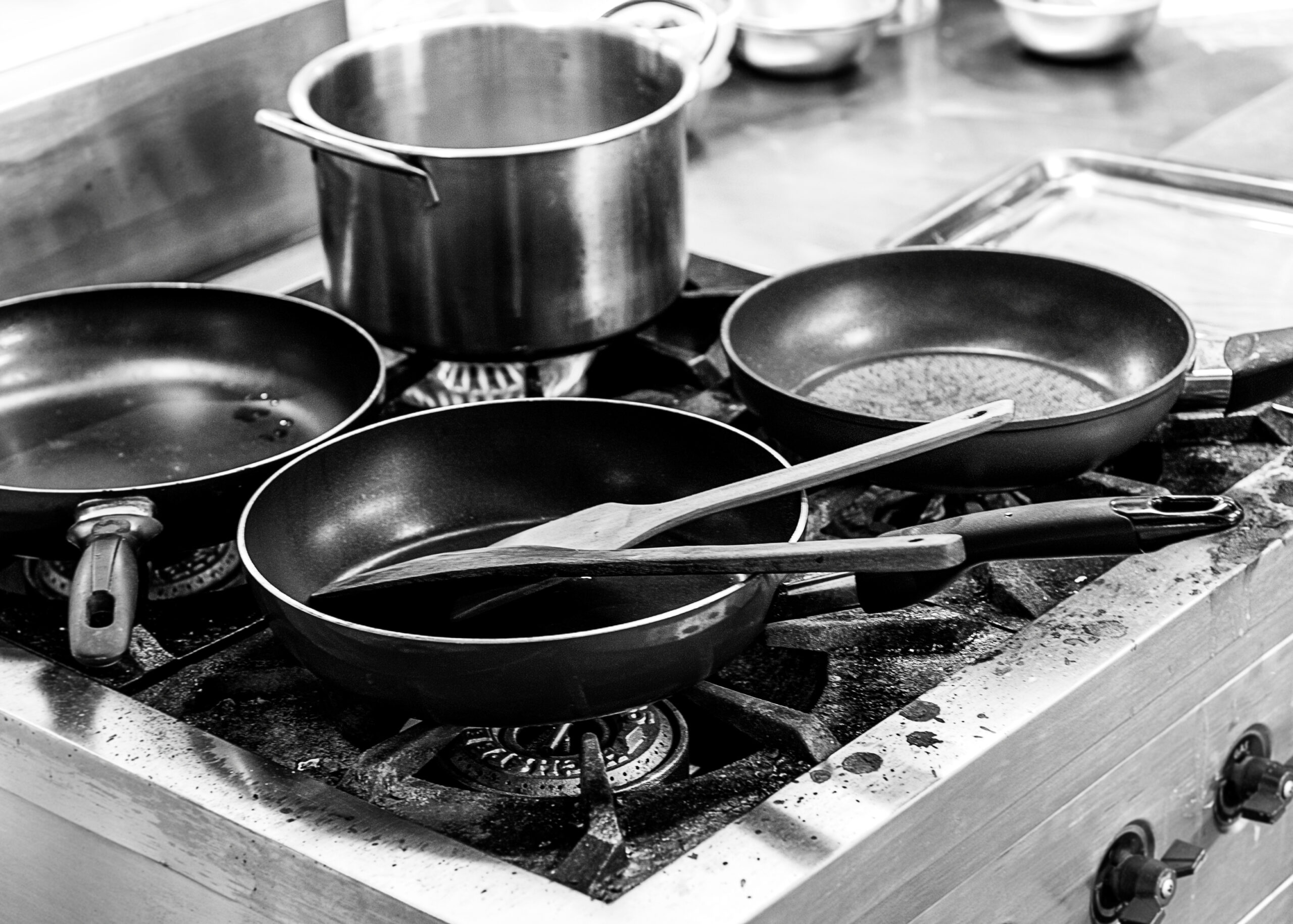If you’ve ever found yourself frustrated with the stubborn remnants of last night’s dinner glued to your Calphalon cookware pans, you’re not alone. It’s a common culinary conundrum that many home cooks have puzzled over. But fear not, for we have delved into the depths of this sticky situation and are here to shed some light on the matter. In this article, we’ll explore the reasons why food tends to stick to Calphalon cookware pans and provide you with some tips and tricks to prevent this culinary sticking point. So, let’s dive in and discover the secrets to a non-stick culinary success!
Common Issues with Calphalon Cookware Pans
Imperfect Seasoning
One of the most common issues that can cause food to stick to Calphalon pans is imperfect seasoning. Seasoning refers to the process of coating the surface of the pan with a layer of oil and heating it to create a natural nonstick surface. If the seasoning is not done correctly or is not maintained properly, the pan may lose its nonstick properties and food can stick to the surface.
To address this issue, make sure to season your Calphalon pan properly before using it for the first time. Follow the manufacturer’s instructions or use a method recommended for your specific pan. Additionally, regularly re-seasoning your pan can help maintain its nonstick properties over time.
Incorrect Preheating
Calphalon pans require proper preheating to ensure even heat distribution and to create a nonstick surface. If the pan is not preheated adequately, food is more likely to stick to the surface. Preheating allows the pan to reach the desired cooking temperature, preventing food from sticking.
To preheat your Calphalon pan correctly, place it on the stovetop over medium heat for a few minutes. Allow the pan to heat evenly before adding any ingredients. This will help create a nonstick surface and reduce the chances of food sticking.
Using too High Heat
Another common mistake that can lead to food sticking to Calphalon pans is using excessively high heat. Calphalon pans are designed to be used at medium to medium-high heat. Using high heat can cause the nonstick coating to break down, making it more likely for food to stick.
To prevent sticking, adjust your cooking heat to a medium or medium-high setting, depending on your recipe’s requirements. Always follow the recommended heat levels for your Calphalon pan to ensure optimal performance and longevity.
Improper Cleaning
Improper cleaning methods can also contribute to food sticking to Calphalon pans. Using harsh abrasive cleaners, steel wool, or scrub brushes with stiff bristles can damage the nonstick surface and create a rough texture that encourages food to stick. Additionally, soaking Calphalon pans for extended periods or using abrasive cleaning pads can degrade the nonstick coating.
To clean your Calphalon pans properly, hand wash them using mild dish soap and a soft sponge or cloth. Avoid using abrasive cleaners or tools that can scratch the nonstick surface. If there are stubborn residues, soak the pan in warm soapy water to loosen them before gentle scrubbing.
Using Metal Utensils
Using metal utensils while cooking in Calphalon pans can scratch and damage the nonstick coating, making it easier for food to stick. Metal utensils, such as metal spatulas or forks, can create scratches that compromise the integrity of the nonstick surface.
To prevent food from sticking, use non-metal utensils, such as wooden, silicone, or nylon utensils, when cooking with Calphalon pans. These utensils are gentle on the nonstick coating and reduce the risk of scratching or damaging the surface.
Low-Quality Nonstick Coating
Sometimes, food sticking to Calphalon pans can be attributed to the quality of the nonstick coating itself. Over time, a low-quality nonstick coating may lose its effectiveness, resulting in food sticking to the pan’s surface.
If you find that your Calphalon pan consistently has issues with food sticking, even when you have followed proper seasoning and cooking techniques, it may be worth considering upgrading to a high-quality pan with a more durable nonstick coating.
Using Cooking Sprays
While cooking sprays can be convenient, they can also contribute to food sticking to Calphalon pans. Some cooking sprays contain ingredients that can build up on the nonstick surface, creating a residue that causes food to stick.
To avoid this issue, try using alternative cooking methods like using a small amount of cooking oil or butter to coat the pan’s surface. These alternatives will provide a lubricating layer without the potential buildup that cooking sprays can cause.
Worn-out Coating
Over time, the nonstick coating on Calphalon pans can wear out, making it more susceptible to food sticking. As the coating deteriorates, the surface becomes rougher, and food has more opportunities to adhere to the pan.
If you notice that your Calphalon pan’s nonstick coating is significantly worn out or peeling, it may be time to replace the pan. A new pan with a fresh nonstick coating will provide a smoother surface, reducing the likelihood of food sticking.
Remnants of Old Food
Leaving remnants of old food on the surface of your Calphalon pan can also contribute to food sticking. Residual food and cooking residues can build up over time, creating a rough texture that makes it easier for new ingredients to adhere to the pan.
To prevent food from sticking, thoroughly clean your Calphalon pan after each use. Pay close attention to removing any remnants of food or residue to maintain the nonstick properties of the pan’s surface.
Poor Quality Ingredients
Lastly, the quality of the ingredients you cook with can also affect how likely food is to stick to your Calphalon pans. Ingredients that release more oil or moisture during cooking may have a higher tendency to stick to the pan’s surface.
To minimize sticking, ensure that your ingredients are fresh and of good quality. Avoid overcrowding the pan, as it can lead to the release of excess moisture. Properly patting dry ingredients beforehand can also help reduce moisture and promote a better cooking experience.

Possible Solutions for Food Sticking to Calphalon Pans
Seasoning the Pan
If you’re experiencing food sticking to your Calphalon pan, start by seasoning it properly. Follow the manufacturer’s guidelines for seasoning or use a method recommended for your specific pan. Seasoning helps create a natural nonstick surface that enhances cooking performance.
Properly Preheating the Pan
Ensure that you preheat your Calphalon pan adequately before adding any ingredients. Place it on a medium heat setting for a few minutes to allow it to heat evenly. Proper preheating helps create a nonstick surface and promotes even heat distribution throughout the pan.
Adjusting the Heat
Using the appropriate heat setting is essential in preventing food from sticking to your Calphalon pan. Adjust the heat to a medium or medium-high level, as recommended by the manufacturer. This will provide the ideal cooking temperature and prevent the nonstick coating from deteriorating.
Using Appropriate Utensils
Opt for non-metal utensils such as wooden, silicone, or nylon utensils when cooking with your Calphalon pan. These utensils are gentle on the nonstick coating and reduce the risk of scratching or damaging the surface. By using the right utensils, you can maintain the integrity of the nonstick surface and prevent food from sticking.
Re-Evaluating Nonstick Coating
If your Calphalon pan consistently has issues with food sticking, it may be worth considering a pan with a more durable nonstick coating. Upgrading to a high-quality pan ensures a longer lifespan and better nonstick performance.
Using Alternative Cooking Sprays
Instead of using cooking sprays, consider using a small amount of cooking oil or butter to coat the surface of your Calphalon pan. These alternatives provide a lubricating layer without the potential buildup that cooking sprays can cause, reducing the chances of food sticking.
Replacing the Pan if the Coating is worn out
If the nonstick coating on your Calphalon cookware pan is significantly worn out or peeling, it’s probably time for a replacement. A new pan with a fresh nonstick coating will provide a smoother cooking surface, reducing the likelihood of food sticking.
Proper Cleaning Techniques
Cleaning your Calphalon cookware pan correctly is crucial for maintaining its nonstick properties. Hand wash the pan using mild dish soap and a soft sponge or cloth. Avoid using abrasive cleaners or tools that can scratch the nonstick surface. By following proper cleaning techniques, you can prolong the life of your pan and prevent food from sticking.
Avoiding Remnants of Old Food
Ensure that you thoroughly clean your Calphalon cookware pan after each use, paying attention to removing any remnants of food or residue that may have accumulated. By keeping the surface clean, you can maintain its nonstick properties and minimize food sticking.
Using High-Quality Ingredients
Choose fresh and high-quality ingredients for your cooking to minimize the chances of food sticking to your Calphalon cookware pan. Properly pat dry ingredients before adding them to the pan to reduce excess moisture, resulting in a better cooking experience.
By implementing these possible solutions, you can address the common issue of food sticking to Calphalon cookware pans and enjoy a more enjoyable and efficient cooking experience. Remember to follow proper seasoning, preheating, and cleaning techniques and use appropriate utensils and cooking sprays. With the right care and attention, you can maintain the nonstick properties of your Calphalon pan and enhance its performance in the kitchen.




